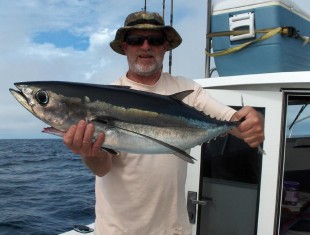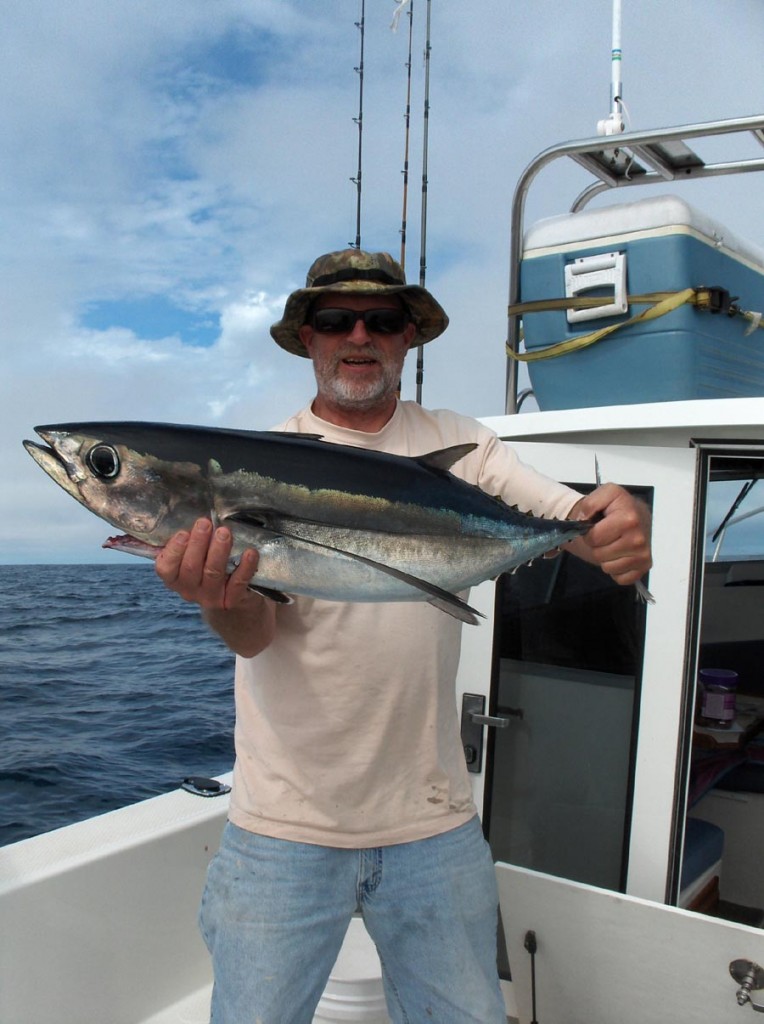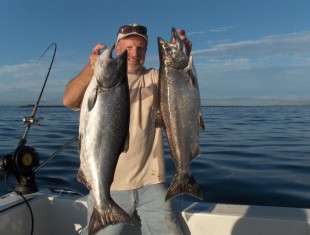EARL SANDE
After more than 40 years working on Mercury outboards, Mercruisers and Volvo- Stern drives, I’ve answered more then my share of questions about how to take care of your boat. I have reprimanded many customers over the years about the condition of their engine and outdrive or the boat in general. I have even gone so far as saying “If abusing your boat was against the law, you would be spending the weekends in jail!!”
Taking care of your boat is a lot about common sense. After working on more then 7,000 boats in my life, I know more than most people on the planet about getting the longest life possible out of your boat. And fortunately the marine industry has made it a little easier for us because of all the technological improvements made in the last 20 years.
Back in the 1950s and 60s it seemed the world was split into two groups: The Mercury people and the Evinrude/Johnson people.
My dad and uncle started selling Mercury outboards about 1950 at Sande Boat Works near Tahuya on HoodCanal. By the time I was four I knew Mercury outboards were good and Evinrude/Johnson outboards were evil. It seems so silly now. I’m sure there are a lot more old Evinrude/Johnsons still running than there are old Mercury outboards.
Carl Kiekhaefer started making Mercury outboards in 1939. In the early 1960s at the annual national dealer meetings Carl would do his best to make sure his dealers knew that Evinrude/Johnson was the enemy. During the evening after consuming huge thick barbequed steaks and lots of stiff drinks a crane would lower about 10 Evinrude/Johnson outboards into a big bonfire. All the dealers would yell and cheer into the night!
One huge development for Mercury outboards happened in 1967 when solid state ignition came on the 50 through 110 horsepower models. This new technology blew the competition away.
The next big step came in 1986 when over half the lineup was totally redesigned. The two biggest improvements were the larger floppy vain water pump impellers – that seem to last forever- and isolating the exhaust/water from the lower crankshaft area. This prevented the problem of water entering the bottom piston through the lower crankshaft seals.
Now with lost foam casting technology there are less water jacket plates and gaskets to fail. And now the cooling areas of the block are coated with a non-stick material so salt doesn’t build-up.
These newer outboards are truly built for salt-water use. Outboards and stern drives still need to be flush-out with fresh water after a cruise in the salt. Be sure to properly install your flusher and always turn the faucet on full blast if you are using an ear-muff type flusher. And don’t forget the golden flushing rule: 1500 RPM FOR 15 MINUTES!
There is generally less maintenance on outboards compared to stern drives. Regardless of what kind of power you have, water and crud in your fuel tank are your worst enemies; a good size water-separating fuel filter is a must.
A separate gas tank vent is a bad idea. During rough water conditions water can easily enter the fuel tank from a poorly located vent. For 20 bucks you can buy a gas filler with the vent part of the filler. It will take up a little more room but will eliminate most of the water in the fuel problems.
Another common problem is loose or corroded battery connections. Battery connections should be lubed to fight corrosion and always wrench tight, not just hand tight.
Some people change gear oil once a year, but when to change it depends on the amount of use. Another golden rule is if the gear oil smells good and looks good it is good. If it looks bad and smells bad it is bad.
If you have a cable within a cable-type steering system for your outboard it needs to be greased at least once a year, but especially in the fall before setting all winter. Loosen up the steering cable nut on the starboard side and steer the cable all the way extended. Then pull the cable out toward the starboard about six inches so the inner cable is exposed. Then put as much grease as possible on the inner cable while pushing it back into the tilt tube of the engine. This simple step will help save you from costly tilt tube and steering cable repair.
Outboard spark plugs can be changed every year or maybe five years depending on the use. When Mercury went to the perma-cap L-76V spark plugs in 1968 I actually saw some last 20 years.
Pull the propeller off at least once a year and check for fish line near the prop shaft seals and grease the shaft. Remove the cowling at least once a year and spray the engine with corrosion-X or something similar to help stop salt, rust and corrosion.
You should also replace the thermostat or thermostats every couple years and of course all the fuel filters should be changed at least once a year.
Stern drives require a little more maintenance. All stern drives should have fresh- water cooling if used in saltwater. Engines built after the late 1980s are light-weight blocks and will not hold up as long with saltwater running through them.
It’s OK to cool the exhaust manifolds with saltwater as long as they’re replaced along with the risers every 10 years. The risers should be removed every few years to inspect and to replace the gasket.
The steering cable should be greased a couple times a year. Just steer the cable all the way extended then using a one-inch wide greasy paint brush coat the stainless steel shafts.
Engine oil, filter and fuel filter should be changed once a year or 50 hours, whichever comes first.
Spark plugs should be replaced every two or three years, but make sure you use marine plugs like AC MR43T. Usually the plastic cover on the carburetor has the correct plug listed.
When you get back from boating and are cleaning things up and flushing the engine remember the 1500 rpm for 15 minute rule.
Before turning off the engine remove the flame arrestor from the carburetor. Don’t drop the nut down the carb like I did about 30 years ago, because the engine will quickly make a weird disgusting noise! With an oil squirt you can squirt some oil down the carb until some smoke comes out the exhaust. This will lube the intake and exhaust valves and the top piston ring. Your engine will love you for this. Today’s gasoline is dryer than a pop-corn fart, so your engine needs some upper lubrication before it sets for a while.
Part of your annual stern drive maintenance is removing the outdrive and checking the bellows and engine coupler. If the drive shaft splines are still greasy your engine alignment is probably close enough. If the drive shaft splines are caked with dry crud you may already have problems. This means either the engine alignment is off or the drive hasn’t been removed often enough and greased properly. This could mean the engine needs to come out so the coupler can be replaced.
When the outdrive is off make sure there is no salt in the shift cable area. If there is, replace the shift shaft seal in the bell housing and fill the shift cable area with grease.
The gear oil should be changed before it looks bad or smells bad, once a year would be nice. Keep all the zincs replaced and touch up any scratches on the drive with the correct paint.
Mercruisers Alfa drives 1991 and newer have the big floppy vain water pump impellers that seem to last forever. But every five years it’s not a bad idea to change them. It’s very important to clean the metal surfaces and replace the gaskets. Also clean and grease all the bolts. Sometimes salt will build up under the gaskets and can suck air creating a heating problem at higher speeds.
On the larger Bravo Mercruiser drives the engine belt-driven seawater pump impellers should be replaced at least every five years and the whole seawater pump assembly should be replaced at least every 10 years.
When you are out in the ocean or any rough water the engine should never be turned off because waves splashing up the transom can enter the exhaust and fill the cylinders with salt water in about three seconds. If the engine acts like it’s stuck take the spark plugs out, then see if it turns over, if water comes out of the cylinders get as much out as you can then put the plugs back in as quickly as possible and get the engine running. It’s amazing how often this happens with a stern drive.
Keep the engine sprayed with corrosion-X or something similar to keep it looking like new. There is no reason to have rust or corrosion on your engine. Always keep an oil absorbent pad in the bilge to collect any drips from the corrosion spray.
Water in the bilge will cost you lots of money in repairs, like starters, rusty oil pans, etc. When your boat comes out of the water so should the boat drain plug. Leave it out until you head for the boat launch, this way you always start with a dry bilge.
Open the motor box once in a while during the day and check for water, oil, gas, or anything else weird going on.
Be careful washing down the boat around the engine cover. Those small planetary gear starters work great but if they get wet they won’t last long.
I could go on and on but I have to stop somewhere. If you know what to do and do it, your boat can last a long time, especially if it has a nice dry building to spend the winter in.
I’m now a young sixty years old, but I’m still working on boats, as long as it doesn’t interfere with my fishing. Give me a call at Earl’s Marine 360-275-4413.



